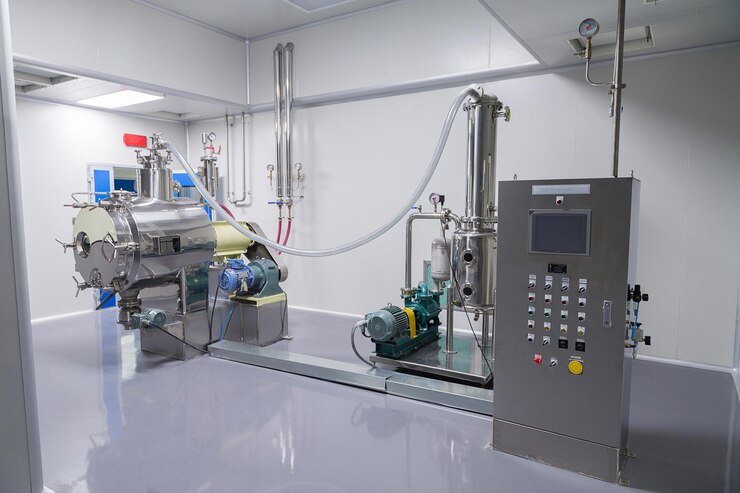In the face of growing environmental concerns and the increasing need for sustainable manufacturing practices, the plastic scrap shredder machine has emerged as a crucial tool in waste management and recycling. These machines, essential in modern automation equipment, play a vital role in reducing plastic waste, reclaiming valuable materials, and supporting a circular economy. In this article, we will explore the functionality, benefits, and technological advancements of plastic scrap shredder machines and their significance in automated production environments.
What is a Plastic Scrap Shredder Machine?
A plastic scrap shredder machine is a specialized device designed to break down plastic waste into smaller, manageable pieces. These machines utilize various mechanisms such as rotary blades, hammers, and rollers to shred plastic materials into uniform sizes, making them easier to handle, transport, and recycle. By integrating these machines into automation equipment, industries can efficiently process and recycle plastic waste, reducing environmental impact and contributing to sustainable practices.
Key Components of a Plastic Scrap Shredder Machine
- Feed Hopper
- Function: The entry point where plastic scrap is loaded into the machine.
- Significance: Ensures safe and controlled feeding of material into the shredder, preventing overloading and ensuring smooth operation.
- Cutting Mechanism
- Function: Comprises rotary blades, hammers, or granulators that shred plastic into smaller pieces.
- Significance: The core of the machine, where the actual shredding takes place. The design and sharpness of the cutting elements determine the efficiency and size of the output.
- Screen
- Function: A mesh or perforated plate that determines the size of the shredded plastic particles.
- Significance: Controls the output size, ensuring uniformity and making the shredded material suitable for recycling or further processing.
- Discharge System
- Function: Collects and conveys the shredded plastic away from the machine.
- Significance: Facilitates easy handling and transportation of the shredded material, streamlining the recycling process.
- Drive System
- Function: Powers the cutting mechanism, usually through electric motors or hydraulic systems.
- Significance: Provides the necessary force and speed to shred plastic efficiently, influencing the machine’s capacity and throughput.
- Control System
- Function: Includes electronic controls for operating the machine, adjusting settings, and monitoring performance.
- Significance: Enhances safety, operational efficiency, and ease of use, allowing for precise control over the shredding process.
Benefits of Plastic Scrap Shredder Machines in Automation Equipment
Integrating plastic scrap shredder machines into automation equipment offers several benefits, making them indispensable in modern manufacturing and recycling processes:
- Efficient Waste Management
- Feature: Rapidly reduces large plastic scrap into smaller, manageable pieces.
- Benefit: Simplifies the handling, storage, and transportation of plastic waste, making the recycling process more efficient and cost-effective.
- Enhanced Recycling
- Feature: Produces uniform, consistent particle sizes suitable for recycling processes.
- Benefit: Facilitates the reprocessing of plastic into new products, supporting a circular economy and reducing the demand for virgin materials.
- Cost Savings
- Feature: Reduces waste disposal costs by minimizing the volume of plastic waste.
- Benefit: Lowers operational expenses and supports compliance with environmental regulations, contributing to overall cost efficiency.
- Environmental Impact Reduction
- Feature: Converts plastic waste into reusable material, preventing it from ending up in landfills or incineration.
- Benefit: Mitigates environmental pollution and conserves natural resources, aligning with sustainable manufacturing goals.
- Versatility
- Feature: Capable of shredding various types of plastics, including hard, soft, and mixed materials.
- Benefit: Provides flexibility to handle diverse plastic waste streams, accommodating different manufacturing and recycling needs.
- Integration with Automation Equipment
- Feature: Compatible with automated systems for feeding, shredding, and conveying plastic materials.
- Benefit: Enhances productivity by automating repetitive tasks and reducing the need for manual intervention, leading to higher throughput and efficiency.
Technological Advancements in Plastic Scrap Shredder Machines
The development of plastic scrap shredder machines has been driven by several technological advancements, each contributing to their effectiveness and integration into automation equipment:
- Advanced Cutting Technologies
- Advancement: Improved blade designs and cutting mechanisms for enhanced shredding efficiency.
- Impact: Reduces energy consumption and increases the machine’s capacity to handle tough or mixed plastic materials.
- Automated Control Systems
- Advancement: Integration of sophisticated control systems with real-time monitoring and feedback.
- Impact: Allows for precise control over the shredding process, optimizing performance and ensuring consistent output quality.
- Energy Efficiency
- Advancement: Development of energy-efficient motors and drive systems.
- Impact: Lowers operational costs and reduces the environmental footprint of shredding operations, making the process more sustainable.
- Noise and Dust Reduction
- Advancement: Innovations in machine design and enclosure systems to minimize noise and dust generation.
- Impact: Improves the working environment and reduces the need for additional dust collection or soundproofing equipment.
- Integration with Recycling Systems
- Advancement: Compatibility with downstream recycling equipment, such as extruders, granulators, and washing systems.
- Impact: Streamlines the recycling process by creating a seamless flow from shredding to material reprocessing, enhancing overall efficiency.
Applications and Impact of Plastic Scrap Shredder Machines
Plastic scrap shredder machines are used across various industries to manage and recycle plastic waste effectively. Their applications and impact include:
- Manufacturing and Production Facilities
- Application: Shredding defective or excess plastic parts and materials.
- Impact: Reduces waste and allows for the reuse of materials, supporting lean manufacturing practices and waste reduction goals.
- Recycling Centers
- Application: Processing collected plastic waste for recycling into new products.
- Impact: Enhances the efficiency of recycling operations, enabling the production of high-quality recycled plastic materials.
- Packaging Industry
- Application: Shredding plastic packaging waste, including bottles, containers, and films.
- Impact: Supports the recycling of packaging materials, reducing environmental impact and contributing to sustainable packaging solutions.
- Automotive Industry
- Application: Recycling plastic components from end-of-life vehicles.
- Impact: Facilitates the recovery of valuable materials and reduces the amount of automotive plastic waste, promoting sustainable vehicle manufacturing.
- Construction and Demolition
- Application: Shredding plastic materials from construction and demolition sites.
- Impact: Helps manage construction waste, allowing for the recycling of plastic components and reducing the volume of waste sent to landfills.
- Retail and Distribution
- Application: Managing plastic waste from retail and distribution centers, such as packaging materials and damaged products.
- Impact: Supports efficient waste management and recycling practices, helping businesses reduce waste disposal costs and improve sustainability.
Challenges and Future Prospects
While plastic scrap shredder machines offer numerous benefits, they also present certain challenges that need to be addressed to fully realize their potential:
- Handling Mixed Materials
- Challenge: Shredding mixed or contaminated plastic materials can be challenging.
- Solution: Ongoing advancements in sorting and pre-treatment technologies are helping to improve the handling of mixed materials.
- Maintenance and Downtime
- Challenge: Regular maintenance is required to keep the machine running efficiently and prevent downtime.
- Solution: Developing more durable cutting elements and automated maintenance systems can reduce maintenance needs and improve machine uptime.
- Integration with Automation Equipment
- Challenge: Integrating shredder machines into existing automation equipment can be complex and require customization.
- Solution: Innovations in modular design and plug-and-play systems are making integration easier and more flexible.
The future of plastic scrap shredder machines looks promising, with continuous improvements in technology expected to enhance their capabilities and applications. Innovations in cutting mechanisms, control systems, and energy efficiency are likely to drive further advancements, solidifying the role of these machines as essential components of automation equipment in sustainable manufacturing.
Conclusion
Plastic scrap shredder machines are pivotal in the realm of automation equipment, offering a robust solution for managing and recycling plastic waste. Their ability to efficiently process and reduce plastic scrap supports waste reduction, cost savings, and sustainable practices across various industries. With ongoing technological advancements, these machines are becoming more versatile, efficient, and easier to integrate into automated systems, paving the way for more sustainable and efficient plastic recycling processes. For businesses seeking to enhance their waste management and recycling capabilities, investing in plastic scrap shredder machines is a strategic move that promises substantial environmental and economic benefits.








+ There are no comments
Add yours